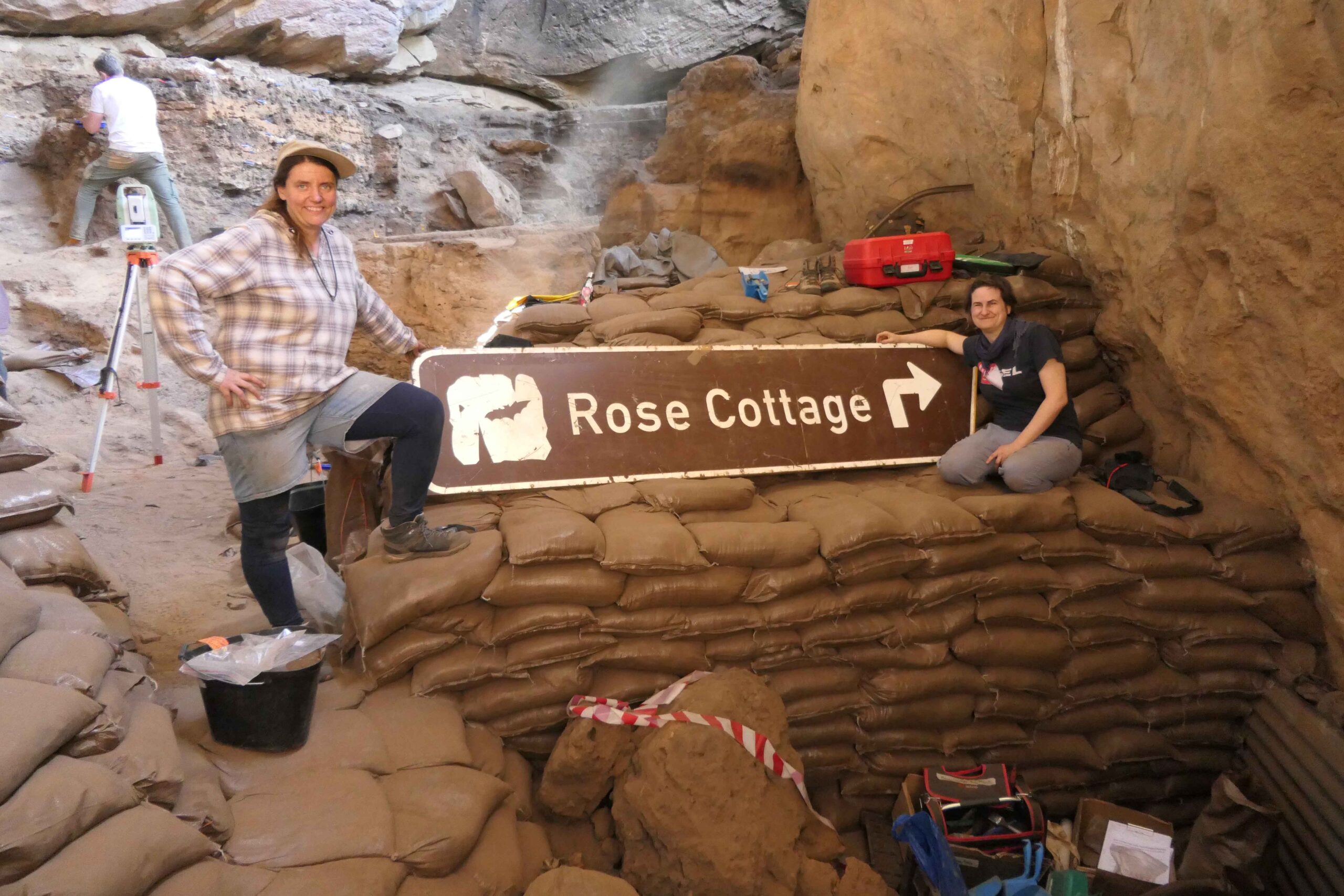Rose Cottage Cave

Time for essential changes
The Middle Stone Age (MSA) in South Africa during Marine Isotope Stage (MIS) 5 marks a crucial phase in human cultural evolution. Using a broad methodological repertoire, the sites Bushman Rock Shelter, Rose Cottage Cave and Sibhudu Cave are investigated to draw conclusions about technology, techno-economy and land use as well as the emergence of innovations and group networking.
The MSA of MIS 5, dated to approximately 130,000 to 75,000 years ago, is characterized by the emergence of new behaviors typical of modern hunter-gatherer societies and regionally distinct technological traditions, manifesting significant changes in human cultural evolution. Although for a long time there was a lack of scientific attention and only certain regions were studied in this regard, the focus of research has increased significantly, especially in the last decade, and more and more evidence is being presented that underlines the unique, inventive and creative character of this period.
Increasing data from archaeology, paleoanthropology, paleogenetics and paleoclimatology point to a complex mosaic scenario of small-scale structured and widely interconnected populations within Africa during the MSA, which successively gave rise to cognitively modern humans with specific cultural characteristics. MIS 5 appears to be the period in which new ideas were tested and behavioural complexity emerged due to various internal and external circumstances before being consolidated in the social system of the subsequent technocomplexes, Still Bay (SB) and Howiesons Poort.
The project aims to verify the wide range of new activities in the South African MSA of MIS 5 from a stone technological and techno-economic point of view by examining three sites from different vegetation zones. In addition, the comparative data will be used to determine networking and knowledge transfer between the groups and to identify possible trigger mechanisms for these developments.
Bushman Rock Shelter (Limpopo) is located on the north-eastern edge of the large escarpment at about 950 m above sea level in the Savannah biome. The cultural sequence includes layers belonging to the Pietersburg technocomplex, which could be divided into three technological phases. The uppermost part, „Phase 21“, is characterized by uni- and bifacial peaks. The project focuses on the analysis of the degradation chains and in particular on the bifacial shaping strategies in Phase 21.
The Sibhudu (KwaZulu-Natal) rock overhang is located 40 km north of Durban in the Indian Ocean Coastal Belt biome. This MSA reference site includes SB and pre-SB settlement horizons. MSA layers C-A have recently been assigned to a new techno-cultural phase, the »iLembian«. Although clear characteristics are emerging, the full extent and origins of this expression are still uncertain. Analysis of the underlying Danny, Darya, Eli and Eve layers will provide clarity on the chrono-cultural developments in Sibhudu MIS 5 and contribute to the general research questions.
Rose Cottage Cave
Rose Cottage Cave (Free State) is a site in the grassland biome at an altitude of 1,676 m. The long stratigraphic sequence is completed by the Pre-HP, which dates from 102,500 to 57,900 years ago. This settlement phase is characterized by unifacial and bifacial peaks. As part of the project, a re-excavation of the Pre-HP layers is planned, as the inventory only has a small number of pieces and this will also allow questions about the site genesis, dating and other aspects to be addressed.
HEAS Members involved: Viola Schmid and Mareike Stahlschmid.